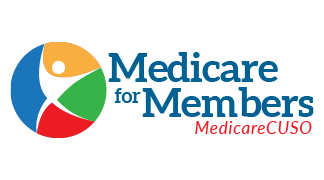The aftermath of Hurricane Katrina in 2005 highlighted major mistakes in preparation and response from private and public entities across economic, civil, and social sectors. The next time a disaster hit, leaders promised, these problems wouldn’t exist.
The storm surge hit New York City on October 29, 2012. When all was said and done, Hurricane Sandy became the largest Atlantic hurricane on record, causing at least 286 deaths in seven countries. In the United Sates, only Karina has eclipsed Sandy’s damage assessments, which surpassed $68 million.
During the storm, Teachers Federal Credit Union ($4.9B, Hauppauge, NY), took to Facebook to assure members they had access to their money. It was one way the credit union could ease members’ fears and allow them to concentrate on more pressing issues.
Financial services, although a concern, were not the primary concern, says CJ Meyers, chief financial officer at Teachers. The concern was the basic necessities: heat, food, shelter. On Long Island we had a major issue with the gasoline supply.
More than 80% of Long Island’s 7.5 million residents lost power for a time. They needed information, so individuals powered up cell phones and connected to what limited Internet they could access. To keep members up to date, Teachers put information where its members were looking: Facebook.
It was a great way for us to communicate with members and keep them updated with what was going on, Meyers says. A lot of them recognized that, and you can see throughout the Facebook [feed] that they were glad we were keeping them informed.
Starting on October 29, Teachers posted daily updates on its Facebook page, informing members of branch and ATM closings as well as updating them on the online banking connectivity issues Teachers’ Internet service provider had experienced for several days. As the storm cleared, Teachers posted relief information, such as a press release from Long Island Cares Inc. informing the public of the 28,700 cases of infant formula being delivered to its Hauppauge food bank. In another post, Teachers warned members about potential tactics of storm chaser scams. The credit union updated its Facebook page expecting few tangible results. Mostly, it wanted to reassure members that their money was available to them should they need it. However, its Sandy-related Facebook updates received nearly 200 likes and more than 125 comments, an indication of its mostly positive impact.
It did help put members at ease during this period, says Meyers. [But] there were naturally some members who weren’t happy, who wound up playing Monday morning quarterback.
Although present, derogatory comments were negligible, and the credit union accommodated inconvenienced members or those who took issue with how the credit union operated during the storm.
Why Facebook?
After Teachers replaced its retired vice president of marketing in 2011, the credit union began a social media initiative that resulted in the creation of its Facebook and Twitter pages to boost awareness among younger generations.
We’re using [Facebook] to make the community aware as to what’s going on, Meyers says of the credit union’s larger social media initiative. For Gen X and Gen Y there’s a tremendous gravity toward social media and we want to make sure we are addressing that group. We try to keep [our pages] fresh with them in mind.
Today, Teachers employs a media director to update the credit union’s Facebook and Twitter sites with blended human interest posts and credit union news and information. That balance is important, especially when looking to attract younger, social media savvy customers.
If we are strictly pushing financial products we may not get that attention or capture the interest of those that are out there, Meyers says.
Membership at Teachers has increased 2.89% year-over-year, reaching 321,499 as of June 30, 2013, according to Search & Analyze data on CreditUnions.com. Its average member relationship increased as well, 2.09% year-over-year versus -1.04% for credit unions with $1 billion or more in assets and -3.13% for credit unions in the state of New York.
The credit union largely attributes these improvements to the rebuilding efforts after Hurricane Sandy, but Meyers points to the efforts of Teachers’ marketing division for the increased Facebook activity in the months after the storm.
Our marketing person is using [Facebook] as a measurement tool to look at the amount of activity and likes’ that we have, he says. I believe it has served the purpose of drawing attention to the community involvement of the organization.
Next Time Will Be Better
In 2005, Facebook had just entered the public consciousness and the 24-hour news cycle was still a thing of the future. Katrina and its destruction caught the country by surprise. With Sandy, the writing was on the Facebook walls and all over the media. Everyone thought they were prepared. But the unexpected occurred, and things went wrong.
You have some points of failure, Meyers says, that although you try to prepare as best as you possibly can there are third party dependencies that you have that are critical mission points that are beyond your control.
After Hurricane Sandy, disaster preparations and aftermath information sharing will improve. Members come to Facebook for information and more credit unions are taking notice. Teachers proved Facebook is more than just a marketing tool; it’s a place to connect to members, especially in times of disaster.
More than 80% of Long Island lost power, but it never lost connection. Facebook, and to a lesser extent Twitter, gave individuals the ability to remain in touch with the world around them. Whether it was Teachers posting updates on branch availability or a friend’s picture of his flashlight collection, Facebook proved a valuable tool in the face of disaster.
